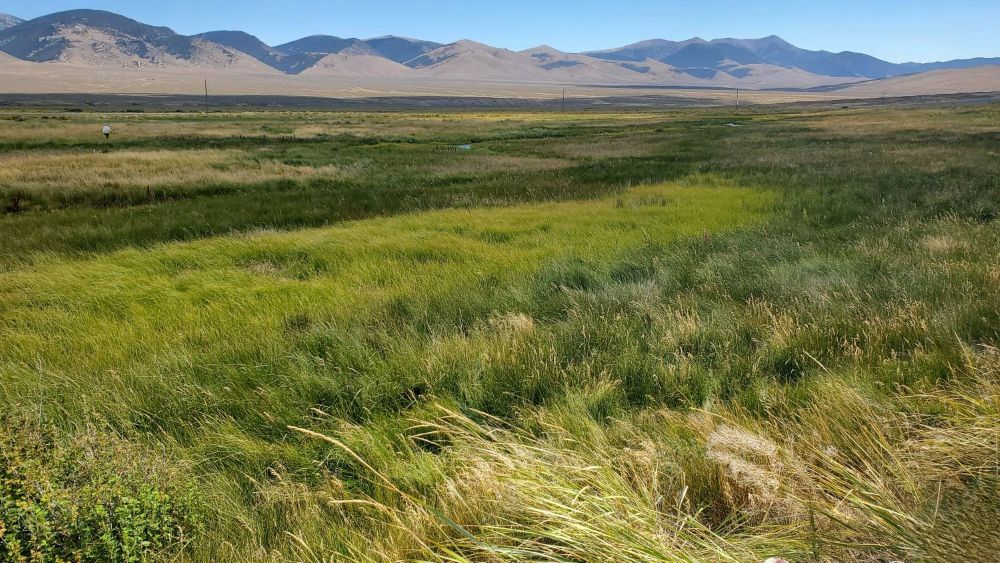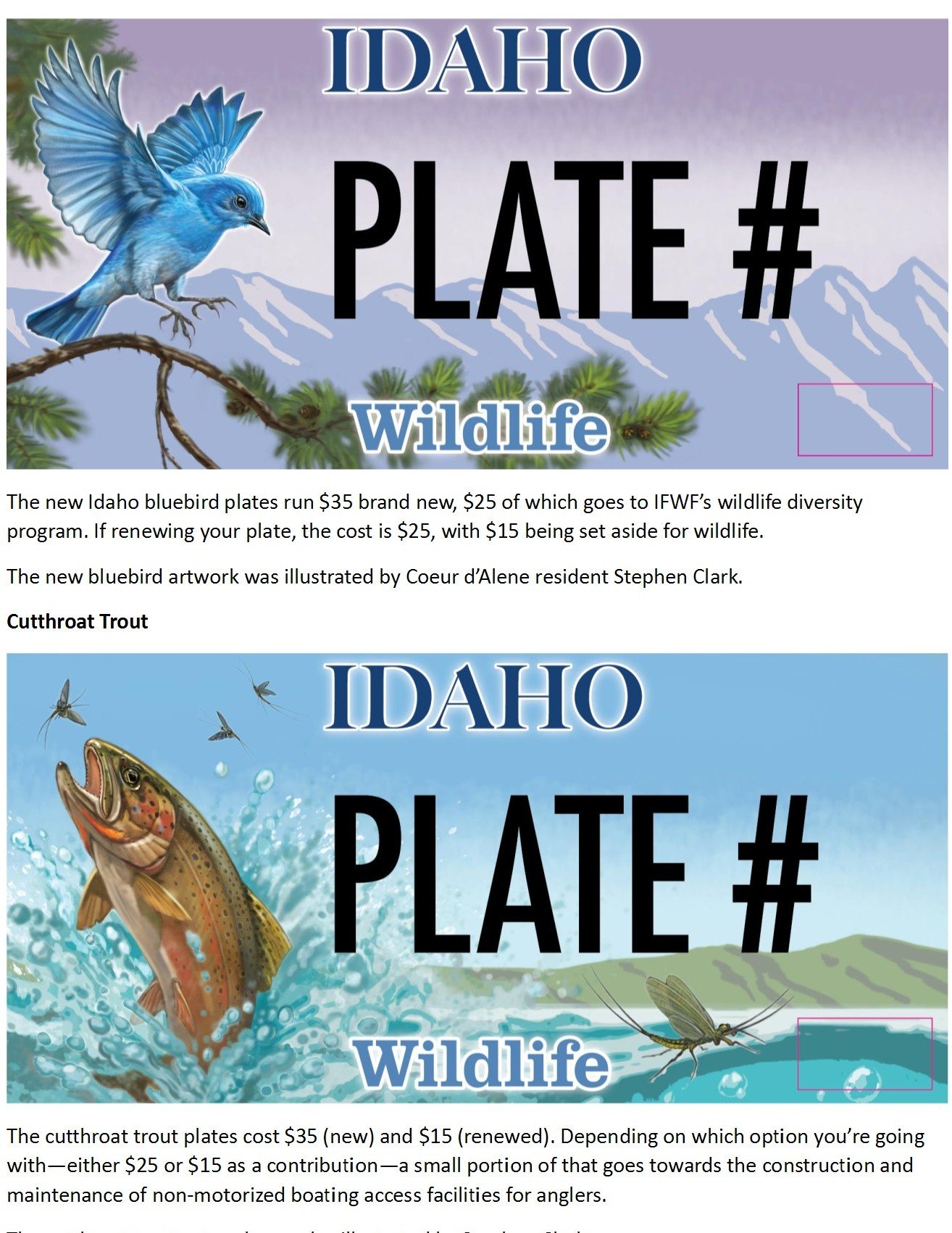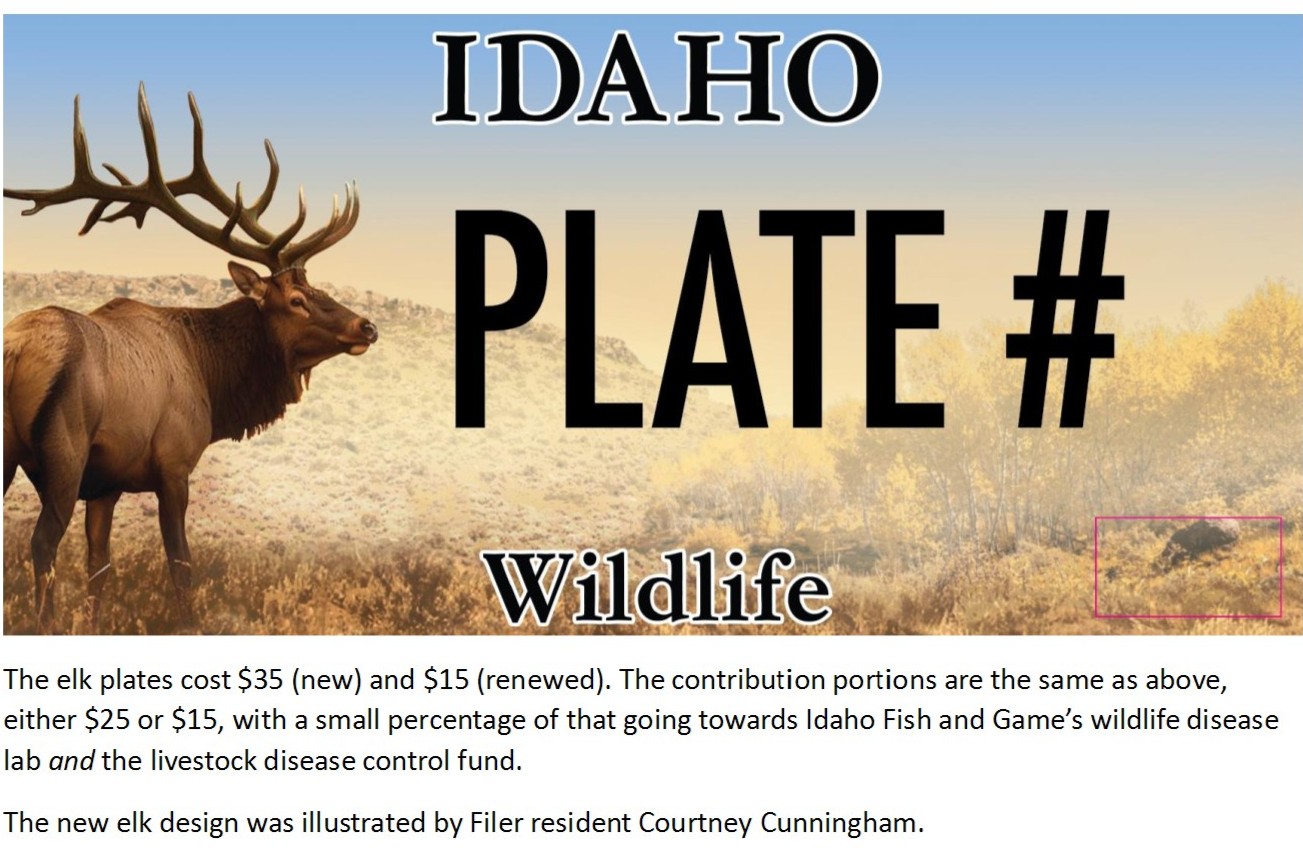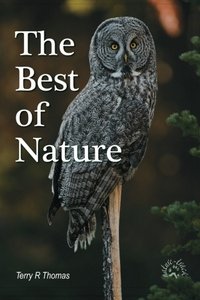Conservation Dependent

©Terry R. Thomas/www.nature-track.com
This riparian spring area is green and lush because of a conservation effort to exclude livestock grazing. If the fence is removed, this area will quickly revert to a non-functioning system.
Our consulting team of four “gray-beards” kicked around inside an exclosure in the Birch Creek drainage (Highway 28) northwest of Idaho Falls. The fence created a very distinct line between the grazed (outside the fence) and the ungrazed riparian area inside the fence and we agreed that this particular site had recovered well since the fence had been installed about ten years previous. One member of the group made that comment that while the conservation effort had paid dividends, it was because of the fence that the restoration was occurring, or as he stated, “it was conservation dependent.” If the fence were to fall into disrepair, all the progress toward a fully functioning system would quickly be lost.
“Conservation dependent” can describe many of the management actions we take today to restore habitats and rebuild wildlife and fish populations. Without the conservation efforts, restoration is often impossible—it does not happen on its own. These conservation actions can be on a local level like the fenced riparian area described above or can be on a forest, state, national, or even international level. Often, once an action, such as the fence, is taken, it must remain in place to gain and maintain the anticipated benefit.
However, conservation dependent also has a specific meaning. In 1994 it was coined as an actual threat category on the Red List of the International Union of Conservation of Nature. “A species that is reliant on the conservation attempts of humans is considered conservation dependent. Such species must be the focus of a continuing species-specific and/or habitat-specific conservation program, the cessation of which would result in the species qualifying for one of the threatened categories within a period of five years.” In 2001 though, the term Conservation Dependent was replaced by “Near Threatened” and Conservation Dependent was reserved for species so designated prior to that time.
But that does not mean that the concept no longer has merit in the conservation world. Recognizing that accepting an ever-lower standard, what one colleague called a slipping baseline, will lead to eventual ecological disaster, conservation efforts abound to restore habitats and populations. While the preferred situation is to manage in such a way as to avoid the need for conservation triage (sometimes referred to as keeping common species common), human intervention into human-caused issues will continue to be essential.
Sometimes conservation dependent means that the action will have to remain in place. As mentioned above, so long as livestock grazing is part of the ecology of Birch Creek, fencing will be required to protect sensitive areas. This is not always true though. With the restoration of a wildlife population for instance, once the population has recovered, many of the restrictions can be lifted. In the endangered species arena, that might mean changing a listing status from endangered to threatened or even a complete delisting, called recovery, as happened with the bald eagle on June 28, 2007. Just over 40 years of conservation work paid off and bald eagle populations had rebounded and were declared recovered.
For other once-threatened populations, white-tailed deer, wild turkeys, and bison all come to mind, once populations had recovered (all prior to the Endangered Species Act), these animals could be added to the list of game species that hunters could pursue.
Bluebird and wood duck nest boxes are other examples of efforts that will need to be maintained until sufficient trees grow large enough to provide homes for them. This can take a very long time, especially in the West where trees do not grow all year long. If we fail to maintain the nest boxes, we risk losing some of the ground we have gained with these species.
In the broader sense, almost all habitats and species are conservation dependent, meaning that humans must at times willingly set aside profits, comfort, and excess and intentionally choose to conserve the world around us. Conservation is dependent on us so this seems a small price to pay.
Help Idaho Wildlife
When we traveled across the state in October 2017, we visited most of the Idaho Department of Fish and Game wildlife management areas. Most of the vehicles we saw using the wildlife management areas did not have wildlife plates. Buying wildlife plates is a great way for non-hunters and hunters alike to support wildlife-based recreation like birding.
C'mon folks, let's help Idaho's wildlife by proudly buying and displaying a wildlife license plate on each of our vehicles!
See below for information on Idaho plates. Most states have wildlife plates so if you live outside Idaho, check with your state's wildlife department or vehicle licensing division for availability of state wildlife plates where you live.
And tell them that you heard about it from Nature-track.com!


Wildlife License Plates
Great news! as of 2024, there are three NEW designs for license plates. They still are bluebird, cutthroat trout and elk, but they are beautiful.
Idaho Wildlife license plates provide essential funding that benefits the great diversity of native plants and wildlife that are not hunted, fished or trapped—over 10,000 species or 98% of Idaho’s species diversity. Game species that share the same habitats (such as elk, deer, antelope, sage-grouse, salmon, trout) also benefit from these specialty plates.
No state tax dollars are provided for wildlife diversity, conservation education and recreation programs. Neither are any revenues from the sale of hunting or fishing licenses spent on nongame species. Instead, these species depend on direct donations, federal grants, fundraising initiatives—and the Idaho Wildlife license plates.
Both my vehicles have Bluebird Plates. I prefer the bluebird because the nongame program gets 70 percent of the money from bluebird plates, but only 60 percent of the money from elk and trout plates - 10 percent of the money from elk plates supports wildlife disease monitoring and testing programs (to benefit the livestock industry) and 10 percent from cutthroat plates supports non-motorized boat access.
Incidentally, in 2014, the Idaho Legislature denied the Department of Fish and Game the ability to add new plates or even to change the name of the elk and cutthroat plates (very specific) to wildlife and fish plates, a move that would have allowed for changing images occasionally and generating more revenue. It would seem that they believe that we Idahoans don't want a well funded wildlife program.
I think it is time we let the Legislature know that Idahoan support wildlife funding and that we would like to see these generic plates come to fruition.

"WOW. What a phenomenal piece you wrote. You are amazing." Jennifer Jackson
That is embarrassing, but actually a fairly typical response to my nature essays. Since The Best of Nature is created from the very best of 16 years of these nature essays published weekly in the Idaho Falls Post Register (online readership 70,000), it is a fine read. It covers a wide variety of topics including humorous glimpses of nature, philosophy, natural history, and conservation. Readers praise the style, breadth of subject matter and my ability to communicate complex and emotional topics in a relaxed and understandable manner.
Everyone can find something to love in this book. From teenagers to octogenarians, from the coffee shop to the school room, these nature essays are widely read and enjoyed.
Some of the essays here are my personal favorites, others seemed to strike a chord with readers. Most have an important message or lesson that will resonate with you. They are written with a goal to simultaneously entertain and educate about the wonderful workings of nature. Some will make you laugh out loud and others will bring a tear to the eye and warm your heart.
Readers Write:
"You hit a home run with your article on, Big Questions in Nature. It should be required reading for everyone who has lost touch with nature...great job!" Joe Chapman
"We enjoyed your column, Bloom Where Planted. Some of the best writing yet. The Post Register is fortunate to have your weekly columns." Lou Griffin.
To read more and to order a copy, click here or get the Kindle version
Copies are also available at:
Post Register
Island Park Builders Supply (upstairs)
Barnes and Noble in Idaho Falls
Harriman State Park, Island Park
Museum of Idaho
Valley Books, Jackson Wyoming
Avocet Corner Bookstore, Bear River National Wildlife Refuge, Brigham City, Utah
Craters of the Moon National Monument Bookstore, Arco, Idaho